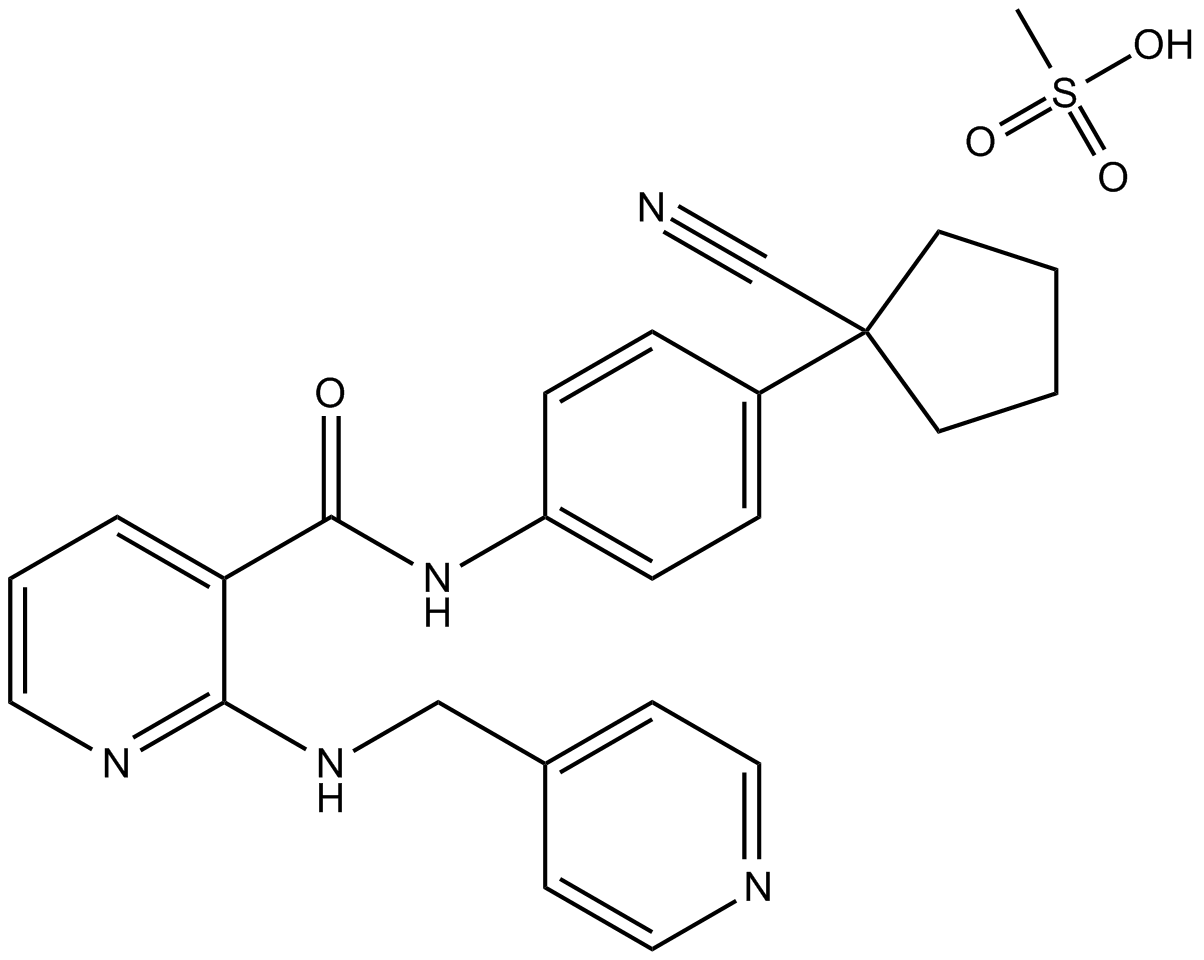Apatinib Mesylate (Synonyms: YN968D1) |
| رقم الكتالوجGC14292 |
يقوم الأباتينيب بحجب انتقال الإشارة الناجمة عن مسار VEGF النازل لتثبيط تشكل الأوعية الدموية الجديدة.
Products are for research use only. Not for human use. We do not sell to patients.

Cas No.: 811803-05-1
Sample solution is provided at 25 µL, 10mM.
Apatinib blocks the downstream signal transduction of VEGF pathway to inhibit neovascularization. Apatinib has showed antitumor effects on many kinds of tumors, such as sarcoma, breast cancer, ovarian cancer, and acute lymphoblastic leukemia (ALL). Moreover, a recent case report provided supporting information for apatinib to treat epithelioid malignant plural mesothelioma.[1]
In vitro experiment indicated that apatinib inhibited cells proliferation in a dose-dependent and time-dependent manner. The IC50 values of apatinib in MPM cells for treatment time 24 h, 48 h, 72 h were 46.34 μM, 45.14 μM, 28.73 μM.[3]
In vivo experiments demonstrated that apatinib inhibits tumor growth and metastasis. The ePCI score of blank control, solvent control and apatinib groups were 9.8 ± 0.9, 10.3 ± 0.9, and 7.3 ± 1.6, respectively. The differences were statistically significant (P = 0.003 for all; P = 0.008, blank control vs. apatinib group; P = 0.001, solvent control vs. apatinib group; P = 0.394, blank control vs. solvent control). The positive rate of Ki-67 in apatinib group was (17.0 ± 8.0)%, which is significantly lower than that in control group (48.1 ±11.5) % (P = 0.000); the positive rate of VEGFR-2 in apatinib group was slightly lower than that in control group, indicating no statistical significance.[1]
References:
[1]. Yang ZR, et al. Apatinib Mesylate Inhibits the Proliferation and Metastasis of Epithelioid Malignant Peritoneal Mesothelioma In Vitro and In Vivo. Front Oncol. 2020 Dec 7;10:585079.
Average Rating: 5 (Based on Reviews and 39 reference(s) in Google Scholar.)
GLPBIO products are for RESEARCH USE ONLY. Please make sure your review or question is research based.
Required fields are marked with *




